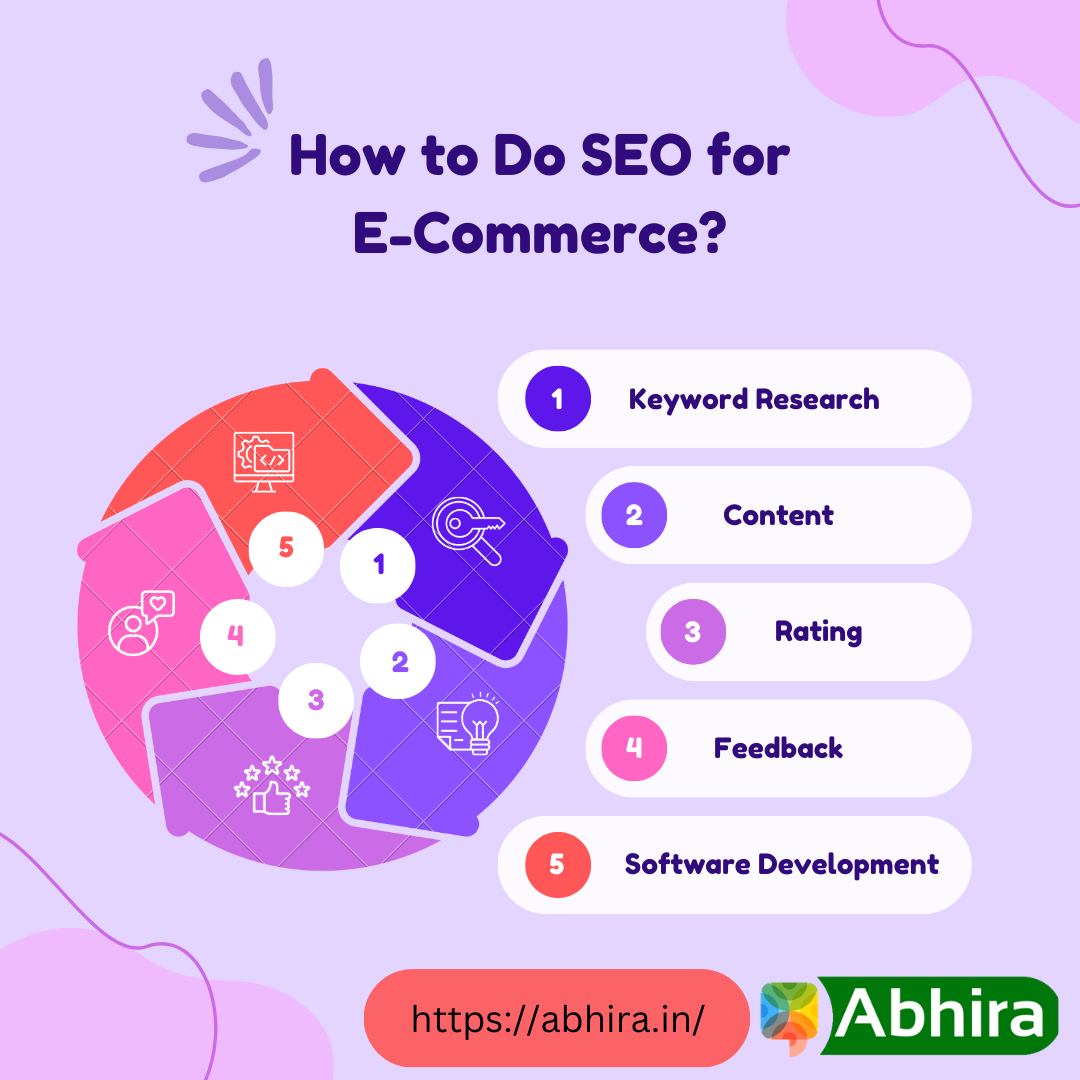How to Do SEO for E-Commerce?

-
Keyword Research:
- Identify relevant and high-converting keywords related to your products.
- Focus on long-tail keywords that reflect user intent and specific product queries.
- Utilize tools like Google Keyword Planner or SEMrush for keyword research.
-
On-Page Optimization:
- Optimize product pages with unique and compelling meta titles and descriptions.
- Include target keywords naturally in product titles, headings, and throughout product descriptions.
- Optimize product images with descriptive alt text.
-
Site Structure and Navigation:
- Ensure a clear and user-friendly site structure with logical categories and subcategories.
- Implement breadcrumb navigation for easy user navigation and search engine understanding.
- Use a sitemap to help search engines index your pages effectively.
-
Mobile Optimization:
- Optimize your e-commerce site for mobile devices as a significant portion of users shop on smartphones.
- Ensure responsive design and fast-loading pages for a seamless mobile experience.
-
Product Schema Markup:
- Implement structured data (schema markup) to provide search engines with detailed information about your products.
- Rich snippets can enhance the visibility of your products in search results.
-
User-Generated Content:
- Encourage customer reviews and ratings for your products.
- User-generated content not only boosts SEO but also builds trust among potential customers.
-
High-Quality Content:
- Create informative and engaging content, such as blog posts, buying guides, or tutorials related to your products.
- Diversify your content to capture a broader audience and establish your site as an authoritative resource.
-
Optimized URLs:
- Use SEO-friendly URLs that include relevant keywords and are easy to understand.
- Avoid dynamic URLs with unnecessary parameters.
-
Technical SEO:
- Regularly audit and fix crawl errors, broken links, and duplicate content.
- Optimize page speed for faster loading times, which is crucial for user experience and SEO.
-
Secure Website (HTTPS):
- Ensure your e-commerce site has an SSL certificate, making it secure for users.
- Google considers HTTPS as a ranking factor, and it builds trust with customers.
-
Social Media Integration:
- Leverage social media to promote products and drive traffic to your e-commerce site.
- Social signals can indirectly impact search engine rankings.
-
Continuous Monitoring and Analytics:
- Use tools like Google Analytics to monitor website performance, user behavior, and keyword rankings.
- Regularly update your SEO strategy based on performance data and algorithm changes.

Sponsored
Search
Sponsored
Sponsored
Categories
- Web Development
- Art
- Causes
- Crafts
- Dance
- Drinks
- Film
- Fitness
- Food
- Games
- Gardening
- Health
- Home
- Literature
- Music
- Networking
- Other
- Party
- Religion
- Shopping
- Sports
- Theater
- Wellness
Read More
Steps to Build Your Own Delivery App Like GoPuff Clone App With Features
If you're looking to venture into the delivery app market and build your own GoPuff clone app,...
WP-CLI (WordPress Command Line Interface)
Understanding WP-CLI Commands:
WP-CLI commands are PHP classes that extend the WP_CLI_Command...
The new avatar of WordPress 6.5
The new avatar of WordPress, WordPress 6.5 "Regina", which was released on April 2, 2024,...
Using GraphQL in WordPress: A Comprehensive Guide
The History of GraphQL
GraphQL, much like React, was originally developed by Facebook. The...
Rajasthan Handicrafts Items by Kalaarii Craft
The beauty of Rajasthan lies in its rich cultural heritage and the exquisite handicrafts that...




